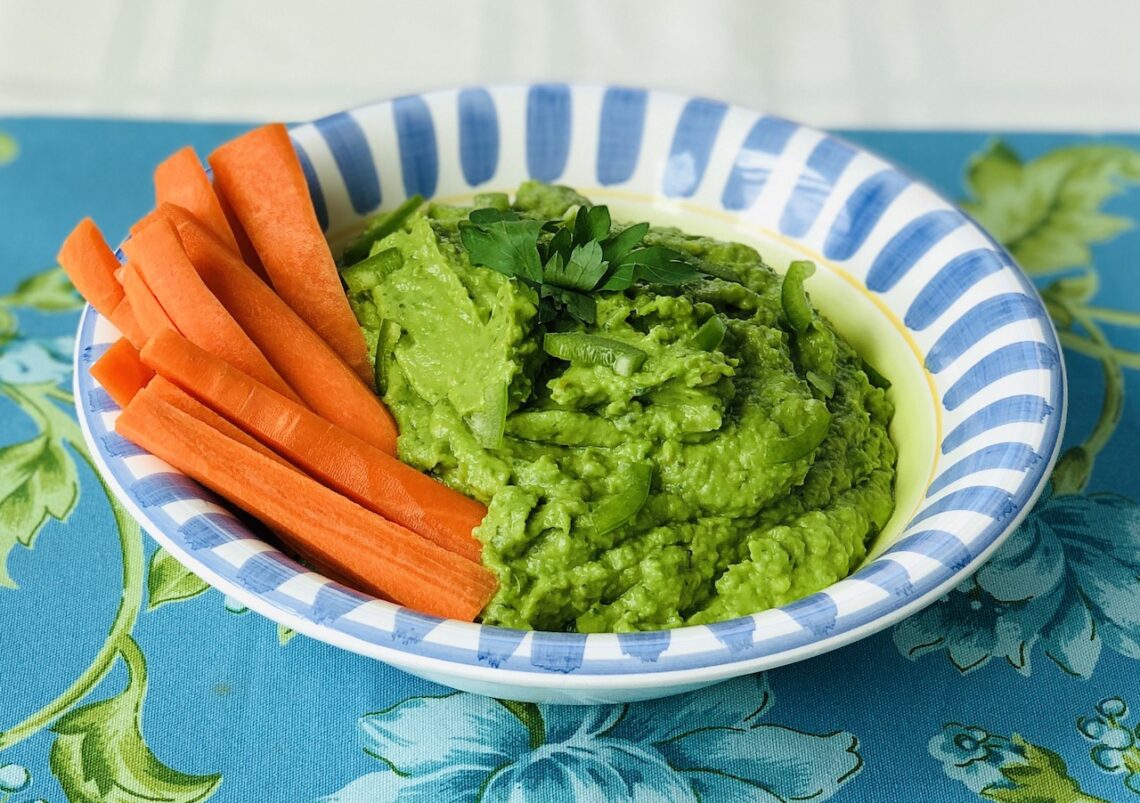
Avocado and Pea Dip
Two summers ago, I was living in Chicago for a couple of months when a friend came to visit. Through some hard-core restaurant searching, we ended up going to Ema, a California-inspired Middle-Eastern restaurant, for brunch. It was great – everything tasted fresh and it was the perfect combination of doughy breakfast foods and light hummus and labneh served with fresh pita. (Not sure how this turned into a restaurant review, but here we are – if you’re in Chicago, the brunch is worth it.)
This recipe comes from Ema. I have to admit that the first time I made it I was disappointed. Although the recipe I found online calls for 4 teaspoons of salt (which has to be an error), I added only one – and even with that reduction I thought it was so salty it was on the verge of being inedible. However, the next day I tried it again and it miraculously tasted great. Here’s a slightly revised version, to be eaten with vegetables or on toast.
For this post, I’m going to focus on one of the dip’s main ingredients: avocados. Avocados are everywhere, the most beloved food of millennials. You can find avocado toast at breakfast places across the world, from San Francisco to Berlin. The world – or, at least the Global North – is obsessed with this fruit. (And yes, it’s a fruit since it has a pit). Because of the increased demand, avocados are referred to as “green gold,” and for good reason. In Mexico, avocado workers earn twelve times the Mexican minimum wage. This is because exports are highly profitable; in 2018, avocado exports from Mexico were worth $2.7 billion. This is in large part due to the recent increase in US and European (and more recently Chinese) consumption. Between 2005 and 2015, avocado consumption in the United States almost doubled, to over seven pounds per person. It’s estimated that Americans consume over 200 million avocados – just on Super Bowl Sunday. And the US isn’t alone; between 2008 and 2018 avocado consumption in Germany quintupled.
Most avocados that Americans eat come from California, Florida, or Mexico (almost two-thirds are imported from Mexico). In contrast, Europeans are more likely to buy them from Spain, Israel, Peru, Chile, or South Africa. While avocado farming causes different issues in different regions, there is one overarching issue: avocados require a lot of water. In fact, an avocado tree needs twice the amount of water needed to grow the same weight of oranges (other estimates put it closer to four times the amount). In Chile, there is evidence that avocado farms have built illegal channels that bring water from nearby rivers to avocado farms, using up available water supplies, leaving residents without enough water for their daily needs.
But there are other more localized issues. Because avocados are so profitable, farmers in Michoacán, the Mexican state that grows the most avocados, are illegally cutting down mature pine forests to grow avocado trees. This deforestationmeans that forests that were sucking in carbon are disappearing and there is less biodiversity. At the same time, the avocado trees that are being planted require lots of fertilizer and pesticides to survive, which may be causing health issues in the surrounding communities.
Additionally, avocados’ profitability is a draw for cartels in Mexico. In Michoacán, four cartels are fighting over the avocado trade and often charge avocado farmers for every kilo of avocados that is exported. Reportedly, between 2009 and 2013 cartels collected $154 million of the profits from Michoacán’s avocado exports. This financial exploitation is accompanied by a real threat – and often violence – to farmers and their families. In response, some towns have formed their own armed civilian units, but such civilian defense groups appear to be localized and it’s unclear how successful they will be in the long run (or if these groups themselves have ties to organized crime).
Where does that leave us? According to Vice, avocados are still more environmentally friendly than eggs and meat. And as this Guardian article and this New York Times reporter argue, at the end of the day boycotting Mexican avocados would harm the avocado farmers, not the cartels, who can always diversify (and who already extort farmers who grow strawberries, limes, and mangos). One thing that could help avocado farmers in Mexico is to fight for stronger gun control laws in the US; the guns that cartels use in Mexico largely come from the US.
If you want to learn more about avocados, watch the Rotten episode on them (Season 2, Episode 1) on Netflix.
Avocado and Pea Dip
Course: Appetizer, Recipe, Snack6
servings15
minutesAdapted from Ema’s Avocado & Sweet Pea Spread with Vegetable Crudite.
Ingredients
2 cups frozen peas
2 cloves garlic
1 tablespoon parsley, chopped
1 tablespoon mint, chopped
1/2 jalapeño, stems and seeds removed
1 teaspoon sugar
1 tablespoon olive oil
2 avocados
2 tablespoons lemon juice
1/2 teaspoon salt
Directions
- Blanch the peas in lightly salted water for 4 minutes. They should be cooked but not mushy.
- In a food processor, puree the peas with the garlic, parsley, mint, jalapeño, sugar, olive oil, lemon juice, and salt until the mixture is almost smooth. You may have to stop the food processor to wipe down the sides.
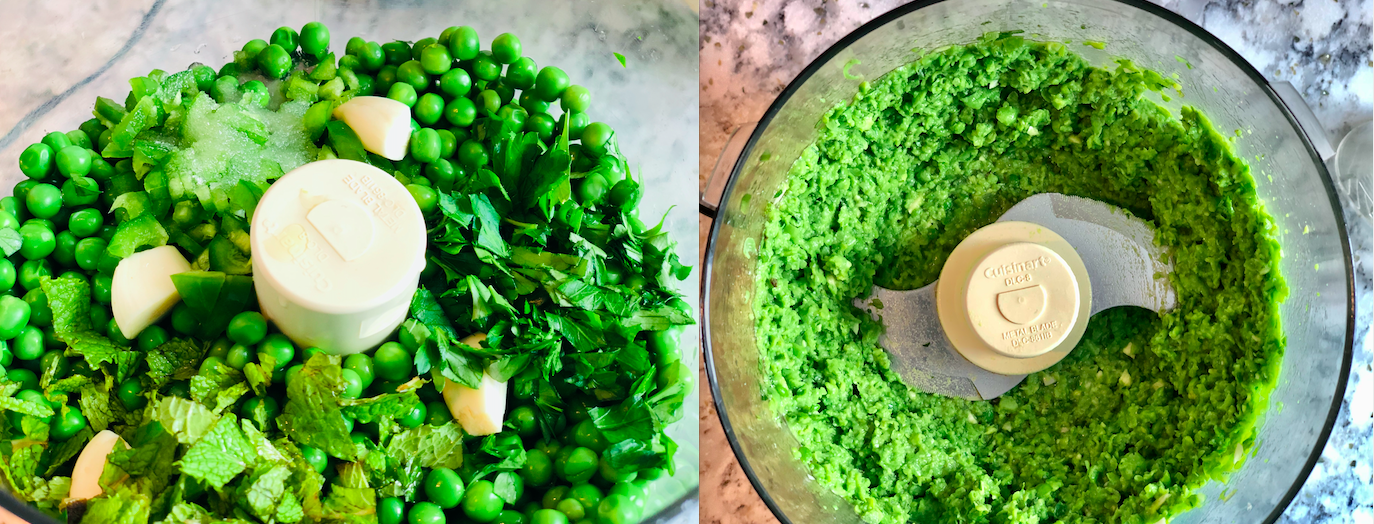
- Add both avocados to the food processor and puree again until the mixture becomes smooth, about one minute.

- Adjust to taste with lemon, olive oil, and salt.
- Serve with vegetables such as carrots and peppers or with crackers or chips.
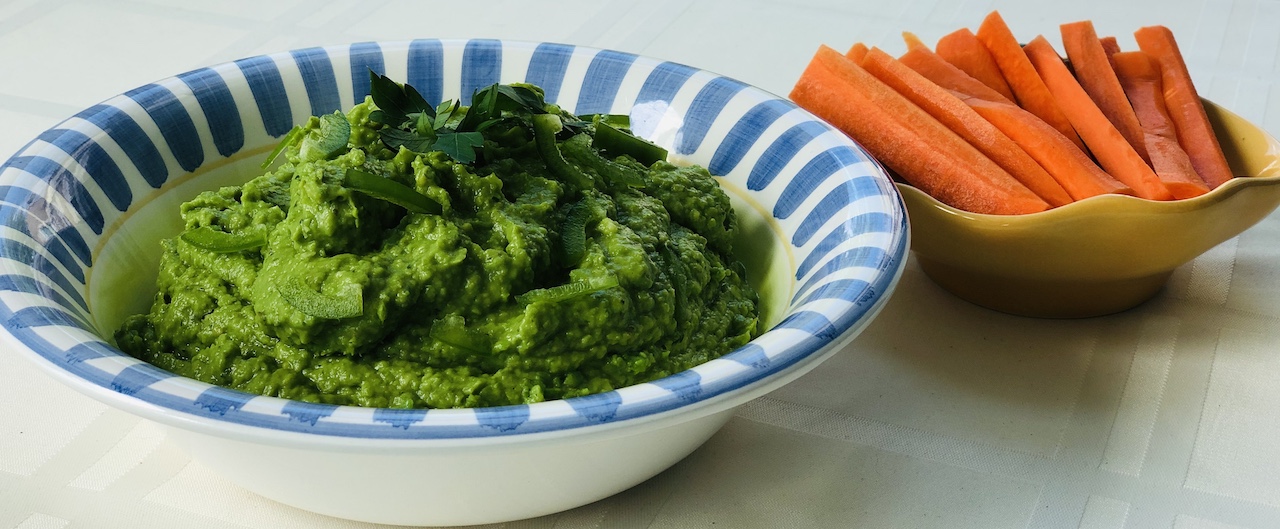
Notes


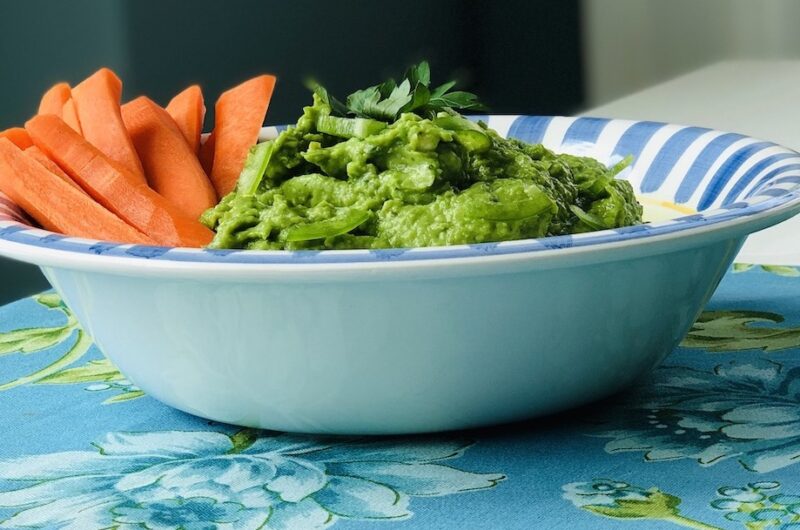
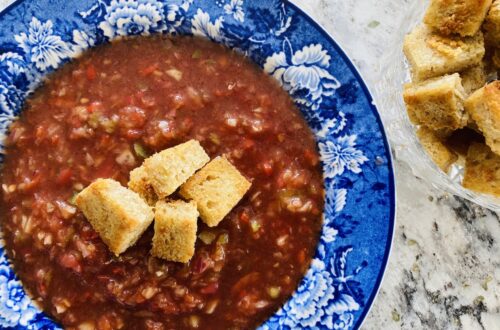

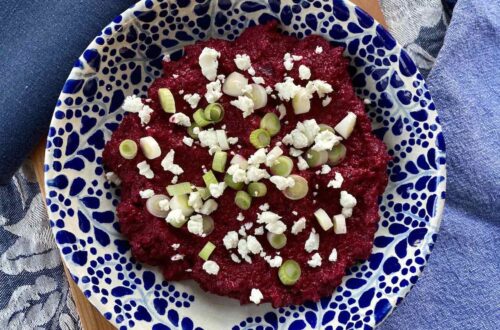
One Comment
Amalia
My parents like Ema. They always talk about taking me there when I’m in town but i haven’t managed to go yet